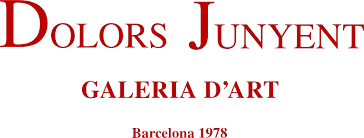Grau Sala, Emili
Emili Grau Sala (Barcelona, 1911 - Paris, 1975)
Catalan painter, considered part of the School of Paris. Son of the draftsman Joan Grau Miró, husband of the artist Àngeles Santos Torroella and father of Julià Grau y Santos.
Since 1929 he devoted himself to painting, illustration and decoration. Despite attending the School of Fine Arts, his training was largely self-taught. In 1930 he held his first exhibition at the Badriàs Gallery in Barcelona.
With the outbreak of the Spanish Civil War, he had to go into exile without his wife, also an artist, and settled in Paris, in the Montparnasse district, where he lived for 25 years. In France he was closely acquainted with the avant-garde, but he was clearly inclined towards a friendly and colorful figuration derived from impressionism and fauvism. Although these movements had already been surpassed by cubism and surrealism, they enjoyed great acceptance in the commercial circuit thanks to the level of masters such as Pierre Bonnard, Chagall and Raoul Dufy, whom Grau followed.
Grau Sala's style, of a soft impressionism, found its space in the publishing and graphic world, highlighting his illustrations for editions of works such as Madame Bovary, Les fleurs du mal and Bel-Ami. He also designed posters and produced lithographs and etchings.
He held exhibitions in Barcelona, Paris, New York, Toulouse, London, Los Angeles, among others. His painting, rich in resources and optimistic, idealizes the subjects and seeks luminosity and chromatic harmony.
En 1963, Grau Sala regresó a Barcelona, cuando artistas como Oteiza, Chillida, Antoni Tàpies y el colectivo «El Paso» (Antonio Saura, Manolo Millares, Rafael Canogar) comenzaban a cobrar fuerza. Sin embargo, él permaneció fiel a su estilo hasta su muerte en 1975, dejando una amplia producción dentro de las mismas coordenadas: figuras femeninas, interiores y paisajes con una ambientación temporal clásica, nostálgica del siglo XIX.
He died in 1975 and rests in the Cemetery of Sant Sebastià de Sitges.
His painting, rich in resources and optimistic, idealizes the subjects and seeks luminosity and chromatic harmony. His early works showed a strong influence of impressionism, which gave him a certain renown in the French capital. Professionally, in addition to painting, he worked as a decorator and literary illustrator, collaborating with publications such as La Nostra Revista and Ariel.
